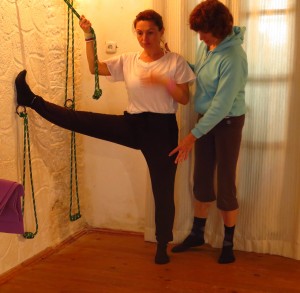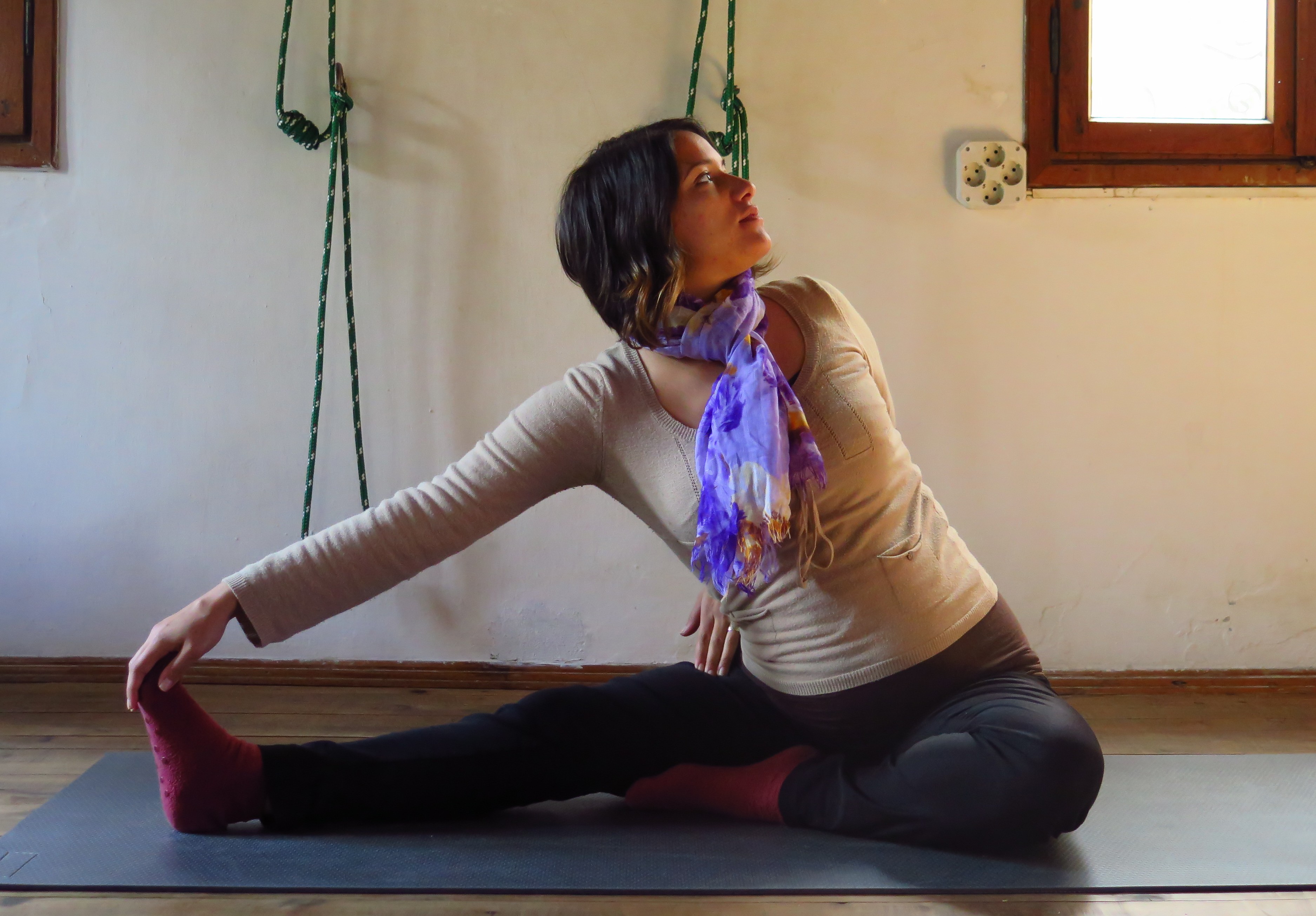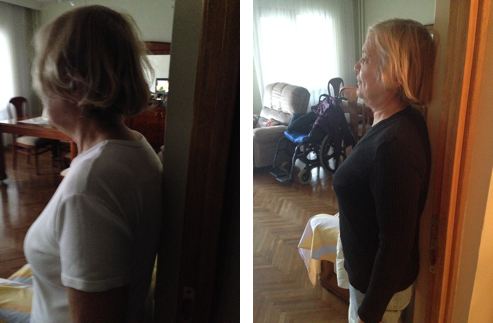YOGA FOR SCOLIOSIS
There is functional and structural scoliosis. Functional scoliosis refers to the way we use our body in daily life. Asymmetries can be seen, like in the shoulders up or down, different length of flanks of the torso or the neck etc, however these asymmetries are not integrated into the bone structure of the body. When they bend forward, their spine is straight and the asymmetries are vanished. When having a structural scoliosis asymmetries will still be seen, but they integrated into the spinal structure.
I have worked with many students who have scoliosis. Practicing yoga has helped them tremendously. Here some pictures taken in the course of 5 months.

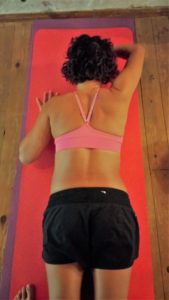
Her cobb angle was 42% . She stretched her body, especially the areas that were tight and short. Creating length by using arms and legs. Stretching forward, backward, sideward and into very mild twists. When the body allows and gives in into the stretches, the weak muscles then must be strengthened.
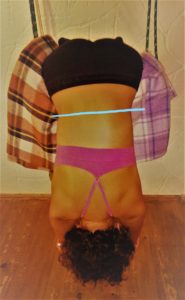
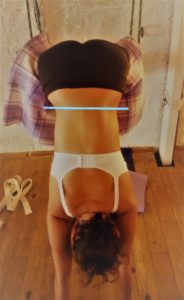
We can see that the muscles left to the lumbar-thoracic spine have eased after 3 months of stretching and strengthening. After such intensive stretching strengthening MUST follow. It is important to have enough time towards the end of the session to relax in restorative pose(s) followed by a long shavasana (deep relaxation) so that the work can be integrated into the musculoskeletal system. NEVER hang students unprepared into ropes, this can destabilize their spine and cause severe damage. This student was able to hang in ropes because she had practiced yoga before.
YOGA FOR STUDENTS SUFFERING WHIPLASH
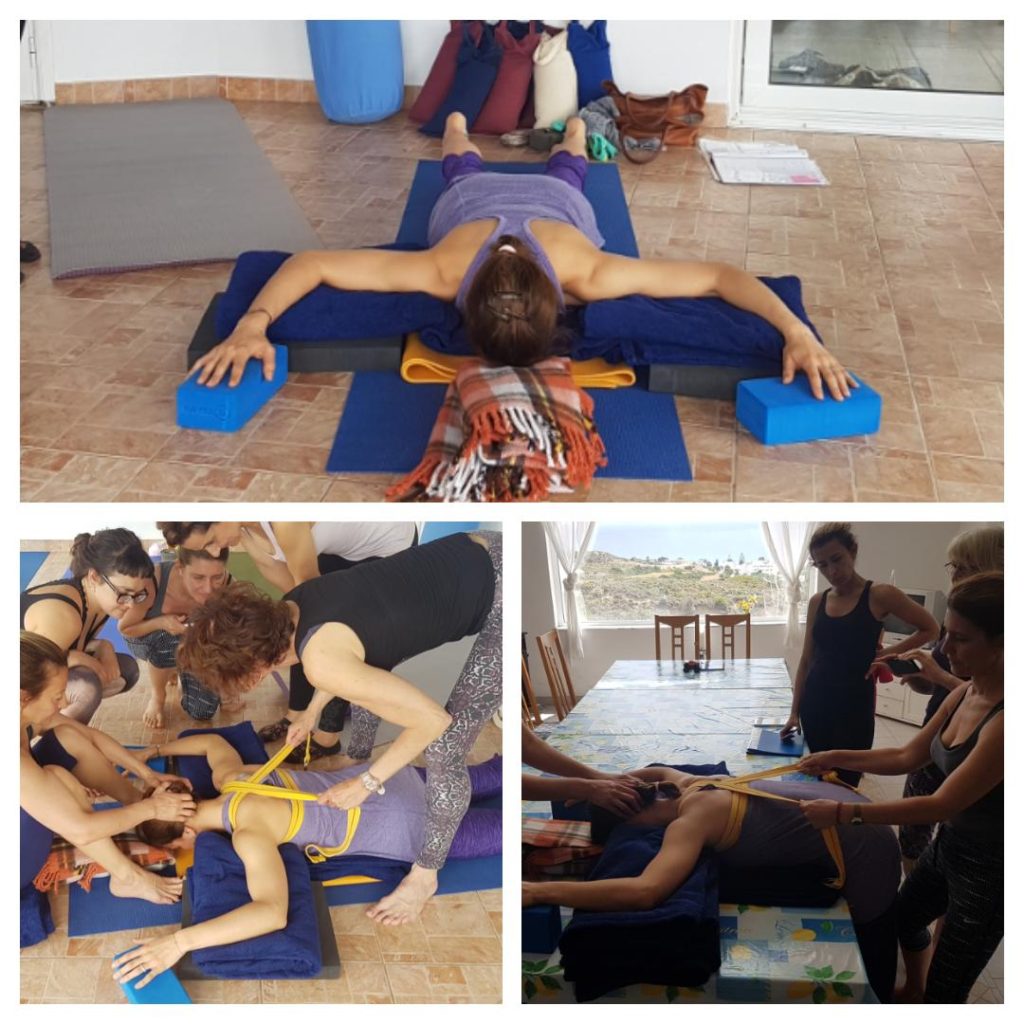
In the pictures above, the student lays down once on the floor and once over a table. Chest and abdomen were supported with blankets. Arms were supported as well. A little pull with the belt to make a slight traction in the neck.
COMMONLY ASKED QUESTIONS
What is yoga therapy?
Therapeutically oriented yoga gives the teacher the opportunity to work on specific problem areas and to attend to students individually. It helps effectively with chronic problems, supports the lymphatic system, balances the hormonal and the nervous system, and strengthens and aligns the musculoskeletal system.
A person with chronic pain can find help through the practice of gentle movements, through restorative yoga and breathing exercises. These kind of practices prove to be of great help in times of emotional upheavals as well as when suffering of depression and anxiety. A practitioner will find that her/his vitality has come back and will find a meaning and orientation in her/his life.
What is the difference between yoga and yoga therapy?
Actually the system of yoga is in itself complete. Together with Ayurveda it addresses all aspects of life; physical, mental and spiritual. Over time, many methods of yoga were created, including yoga therapy. I would say, the intention when practicing and teaching therapeutic yoga is different: A student comes for help and support, and the teacher applying yoga with therapeutic benefits answers it with the best possible knowledge and consciousness.
What makes a teacher a yoga therapist?
Many years of teaching experience, and many hours of training!
What are the benefits of therapeutically oriented yoga?
First of all, a student searching for support needs to have the sincere desire to get well and be open to change. Illness is a result of not being in tune with oneself, which comes through extreme stress, unhealthy nutrition, as well as addictive habits. Most of us need to slow down and relax. The achievement is a sense of well-being and healing in body and mind, contentment and orientation. I can say that I can observe this in my students.
Who finds most benefits with yoga therapy?
Everyone. People come for many reasons – mainly stress related problems, back, neck issues and scoliosis, neurological disorders like MS, depression, anxiety, thyroid disorders, womens’ health, insomnia, high and low blood pressure, fibromyalgia, cancer, chronic issues and more. I have also witnessed that people come out of desperation to find relief from chronic illnesses and pain.
CORRECT ALIGNMENT IN HIPS
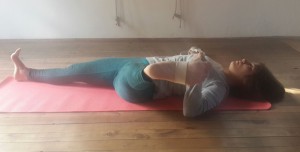
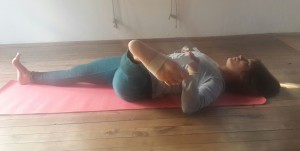
In supta padanghustasana II please dont turn your foot, consequently your upper thigh too much outwardly. Over time your hip joint will say ‘Ouch’. Advice: keep your outer foot parallel to the floor. Your hip joint will love it. Also: push the sitting bone of your raised leg down toward the inner heel of your leg lying on the floor 🙂 Well done!
NECK ISSUES – 3 FUNDAMENTAL APPROACHES
Unfortunately we sit almost all day long, looking into screens, tablets and phones. This has a catastrophic effect on our necks. Especially children in early age are in danger of developing weak necks. One can say that there are 3 immediate cures for a forward neck posture:
Chest openers: any chest openers will do. Here: supported fish pose
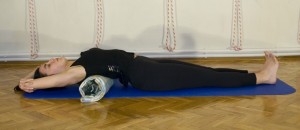
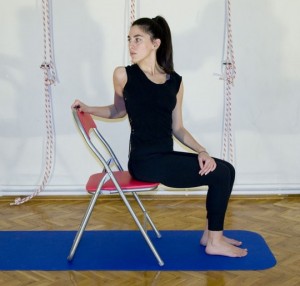
Mobility to the spine through twisting:
The neck is not an isolated part of the body. We need to bring flexibility to the entire spine. Twists are great for this purpose!
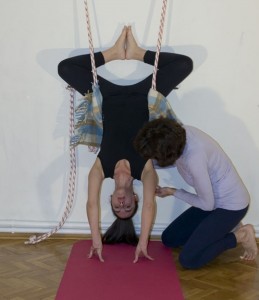
Mild traction to the neck: this is a headstand variation. The trapezius muscles to the side of the neck are lifted up. The elbows move toward each other. The neck stays in its natural curve. This is so wonderful for neck issues. However you need to do this together with an experienced teacher!
FORWARD NECK POSTURE
In the following pictures you can see how this student’s posture and forward neck posture has changed in 3 months. (picture taken from a student’s case study)
KYPHOSIS
This student of mine has kyphosis. In order to address her thoracic spine we practiced setu bandha sarvangasana (bridge pose). We needed to elevate her shoulders at least 15 cm. Like this she was able to get on top of her shoulders and her head was able to drop freely and her neck could curve naturally.
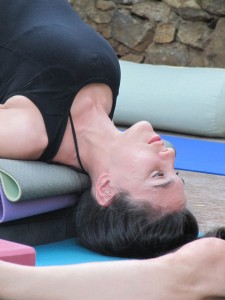
YOGA FOR ELDERLY
Elderly people respond to yoga so wonderfully. The body remembers flexibility and movements in younger age and they progress so fast.

TWISTED PELVIS
It is being said that 60% of people have some sort of twisted pelvis. Keeping the front pelvic rim aligned and facing equally forward is important. 